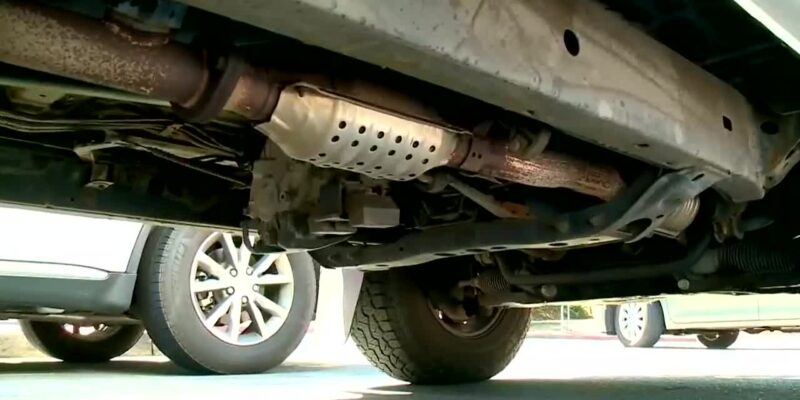The catalytic converter is an element that makes up the exhaust line. Its purpose is to reduce vehicle pollution by filtering exhaust gases. Its particularity lies in using a chemical reaction called catalysis to clean up exhaust gases. Since it works most efficiently at high temperatures, it is usually placed immediately after the exhaust manifold.
On vehicles fitted with a particulate filter, it may or may not be used. If the vehicle is still equipped with it, the catalyst is usually placed before the particulate filter. This device is used both on vehicles gasoline than diesel.
How Does The Catalyst Work?
When the exhaust gases leave the cylinders, they circulate in the manifold, which will transfer them to the catalytic converter.
The latter acts primarily as a simple filter that will retain the harmful particles contained in the burnt gases. When the temperature rises to reach 400 ° C, a chemical reaction called catalysis will occur. Indeed, elements such as carbon monoxide and nitrogen oxide, which are highly polluting, will be transformed into less harmful elements. Search for scrap catalytic converter prices
The pollution control capacity of a catalytic converter can reach 90%. In other words, only 10% of the harmful elements leaving the cylinders come out of the catalyst. This is why other pollution control devices can be used with catalytic converters such as the particulate filter, etc.
What Are The Problems With The Catalytic Converter?
The average lifespan announced by the manufacturers for a catalytic converter is 150,000 km. However, depending on the use of the vehicle, this time can be more or less shortened. This is because various reasons can cause the catalyst to malfunction.
The most obvious is a physical defect caused by interactions with the external environment, such as rust, friction with the ground, etc. In these cases, the pot will need to be repaired or replaced. Apart from this case, you should know that catalysis only occurs when the pot’s temperature reaches 400 ° C.
The pot is composed of a ceramic filter; when the chemical reaction does not occur, the filtered particles mixed with unburned oil will form a deposit and clog the pot. This phenomenon is irreversible, which is why, when the catalytic converter is blocked, it will have to be replaced.








Comments